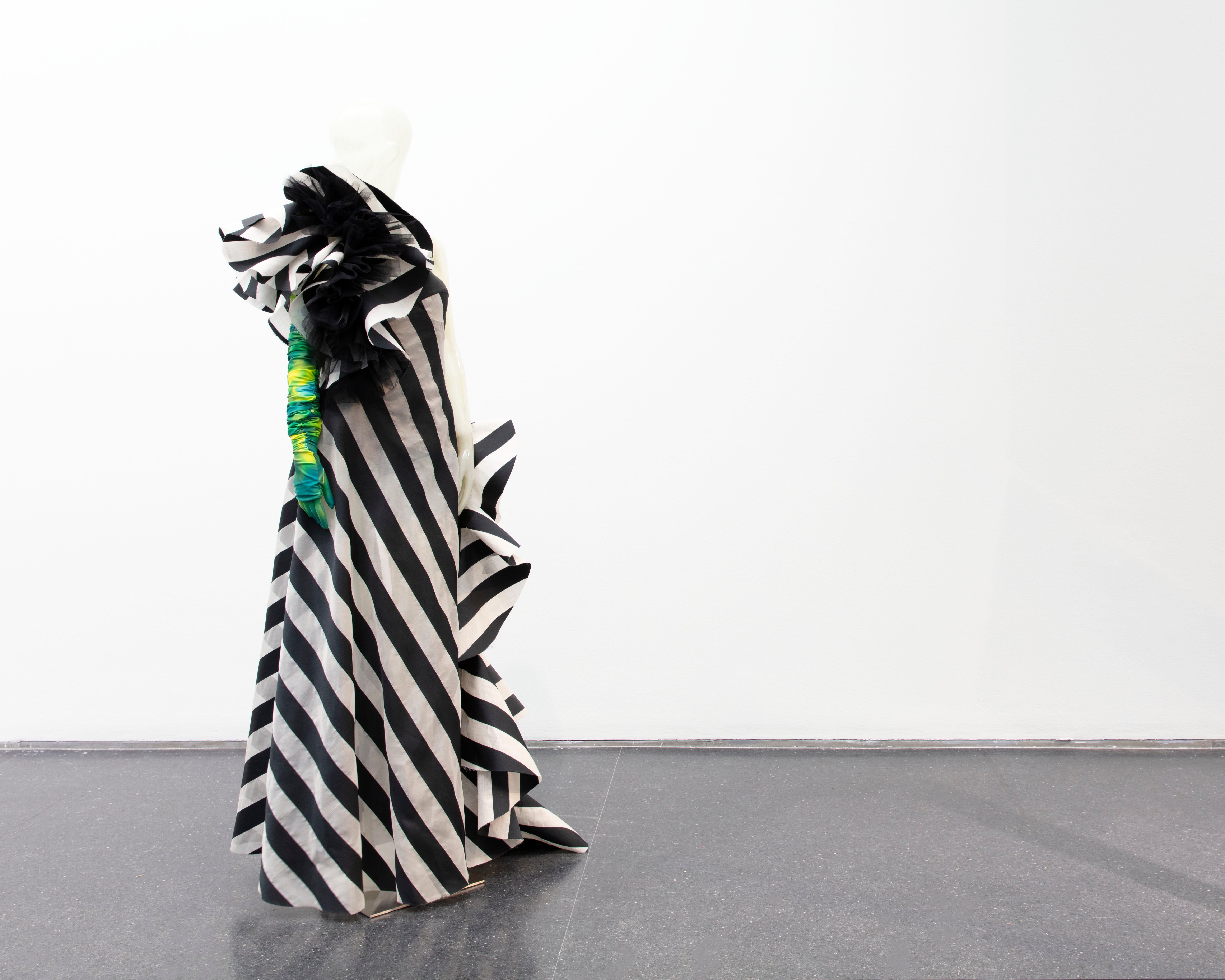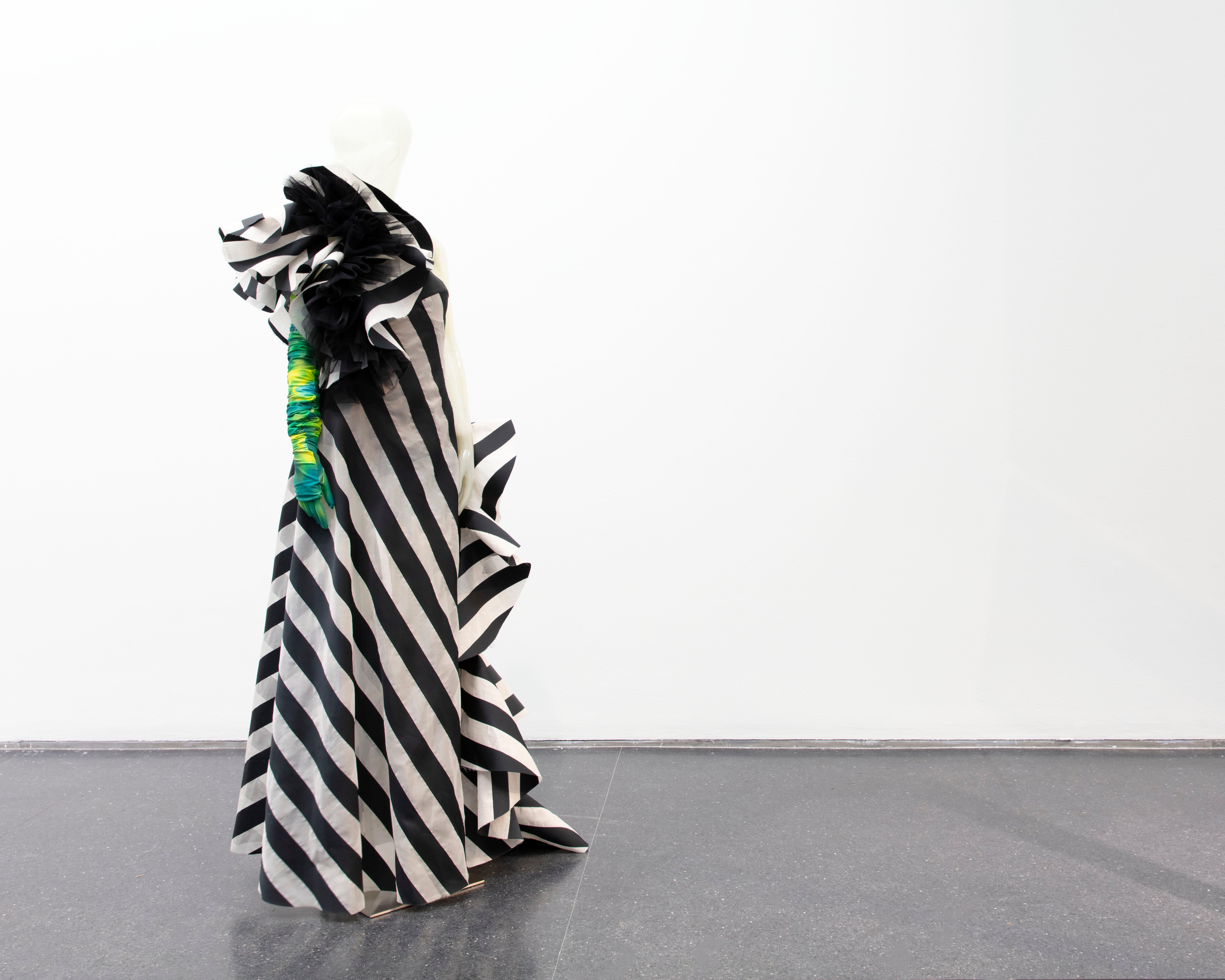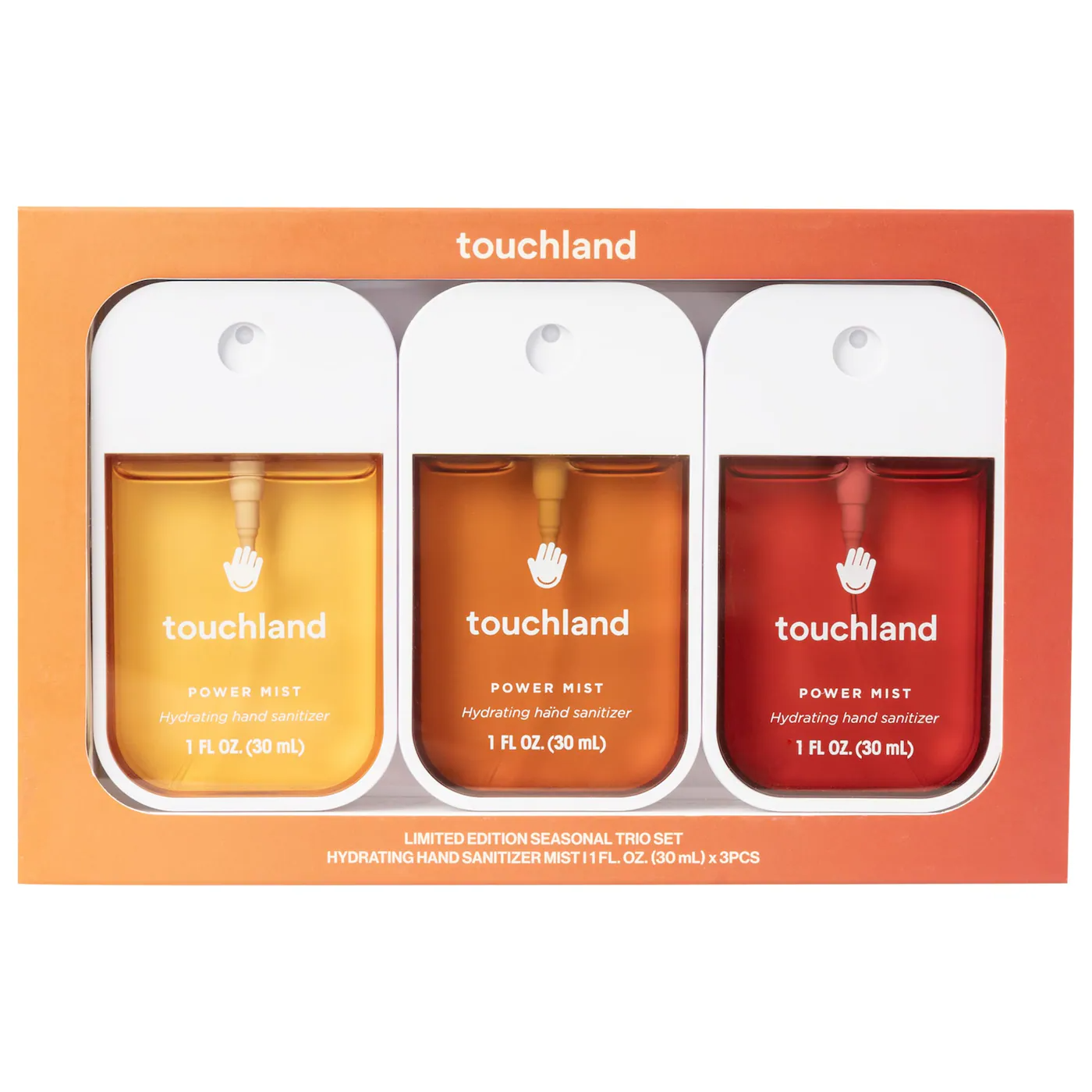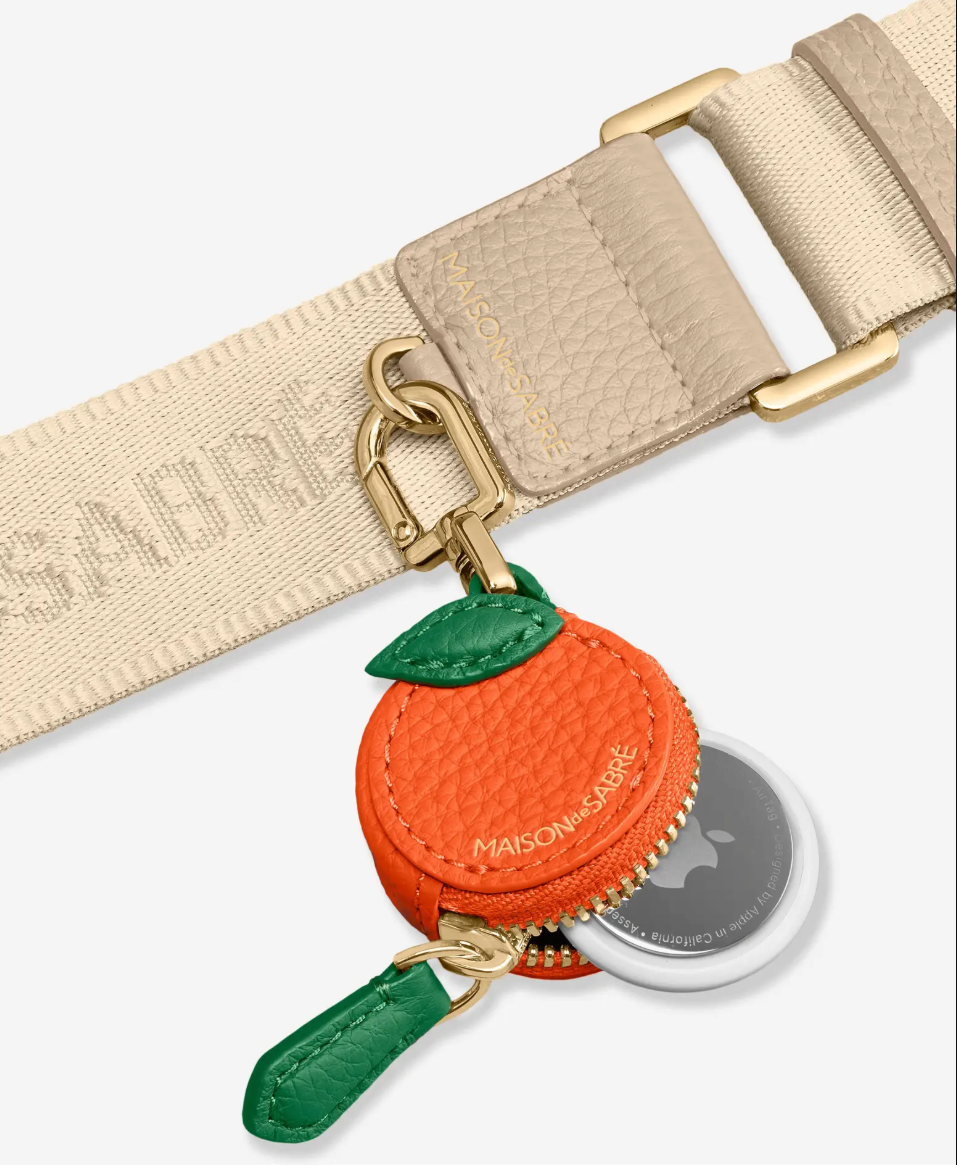

Question everything: This was the motto of the late fashion designer Virgil Abloh. It was also the thought running through my head as I walked through the Brooklyn Museum’s “Virgil Abloh: ‘Figures of Speech’” exhibit, prompted by a hanging flag expressing this sentiment. In 2019, I visited the first iteration of the show, dedicated to the work of the designer-architect-DJ-photographer who flipped conventions in every industry he entered, at the Museum of Contemporary Art Chicago. But, while browsing through the 100-plus items, ranging from design prototypes and clothing to art installations exhibited at their new home, I started to question what I had previously seen.
Partially this was because of the different layout of the Brooklyn exhibit. It doesn’t follow the multihyphenate’s career chronologically like the one in Chicago did; the show begins by displaying pieces like the Louis Vuitton Keepall travel bag, that Abloh reimagined after he became the heritage house’s first Black artistic director in 2018, and a clear suitcase from Off-White’s collaboration with Rimowa, one of the many partnerships that he helmed.
Partially it was because I first saw “Figures of Speech” in the Before Times. Before the pandemic. Before Abloh died from a rare form of cancer in November 2021. (While the exhibit debuted posthumously, Abloh was involved in its planning until his death; his design studio, Alaska Alaska, in tandem with Mahfuz Sultan, collaborated with the museum “to ensure that the artist’s vision was fulfilled,” according to the exhibit notes.)

The show — loosely broken into sections like architecture, music, design, and fashion — still holds the clothing racks full of pieces from Abloh’s first fashion venture, Pyrex Vision, and the Milan-based label that he founded in 2013, Off-White. There is still the striped dress Abloh created for Beyoncé’s 2018 Vogue cover shoot (it didn’t appear in the magazine). There is still the Nike shoe display from when the sportswear giant enlisted the multidisciplinary creative to redesign 10 of its most famous footwear styles in 2017. Yet, unlike typical exhibits, there is barely any signage accompanying the pieces, as if inviting viewers to be a “tourist or a purist,” a point of view that Abloh employed during his design process. Depending on how much you know about Abloh, or whether you want to consult the brochure the museum hands you upon entry or make your own assumptions about the items displayed, you can land in either of the camps.
Some of the most memorable additions to the exhibit include full looks from the recent Louis Vuitton seasons, as well as the Social Sculpture, a large wooden house in the center of the exhibit that Abloh imagined as a space for aspiring designers, artists, architects, and others to come together to collaborate and learn from more-established creatives. The sign around the entrance of the sculpture reads: “Abloh considered the sculpture a representation of Black space, a living monument that holds the potential, through the exchange of ideas, to inspire the creation of more Black space.” To honor Abloh’s legacy of making room for others and championing youth, the Brooklyn Museum will use the room to host a rotating lineup of public programs and workshops. The structure itself, which invites people to enter and explore the “art,” rather than view it from a distance, is in line with Abloh’s tradition of challenging establishment norms.

The “purist” Abloh fans will no doubt spend the longest time at the long tables featuring the multifaceted creative’s various contributions to art, fashion, design, architecture, and music via sketches, prototypes, and finished works, which, as the brochure says, were “informed by the late artist’s understanding of all things as prototypes or works in progress.” As the notes go on to explain, “The relentless process of making, testing, remaking, and retesting is part of the fashion industry and was central to Abloh’s way of working across disciplines.” A reminder that art is never complete, that Abloh will live on.
Just when you think the exhibition is over, after watching a selection of videos from Off-White’s and Louis Vuitton’s runway shows, there is a final reminder of how often Abloh turned established norms on their head. A sign outside the gift shop, where you can buy everything from graphic T-shirts and sweatshirts (a nod to Abloh’s beginnings when he screen-printed images onto store-bought apparel) to coffee table books and exhibit memorabilia, reads the following:
“Recognizing that capitalism and consumption are inevitably present in the invention and creation of objects, Abloh, in his practice, questioned whether there is truly a difference between the commercial and the artistic. For him, the store, where objects displayed can be purchased, is as much part of the exhibition as are the other works on view.”
A gift shop that is an extension of an exhibit? Question everything.
“Virgil Abloh: ‘Figures of Speech’” runs from July 1, 2022, to January 29, 2023.
Like what you see? How about some more R29 goodness, right here?
What Is Virgil Abloh’s Legacy?




